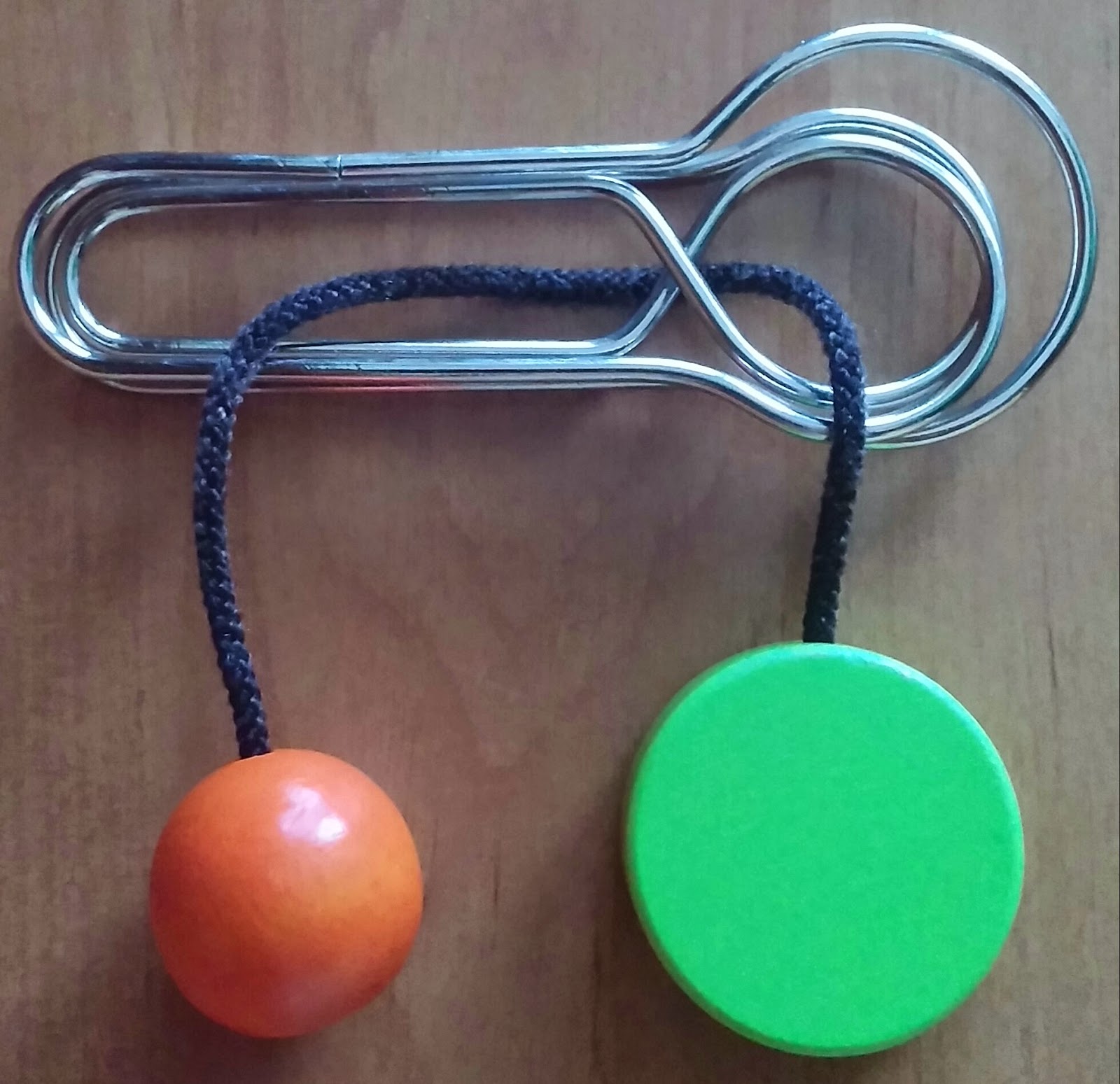 |
| Space Space Maze - Puzzle 1 |
 |
| Space Space Maze - Puzzle 2 |
 |
| Space Space Maze - Puzzle 3 |
The goal of these puzzles in most of the cases is to place the small marbles on the small holes. Usually, the holes are randomly positioned and when you put marble on a hole, you will need to be very careful in handling the puzzle further, otherwise you will end in a marble leaving a hole. Some puzzles have obstacles on the way of the marbles, others have free space above the marbles and the obstacles, which will ruin your current placement of you happen to turn the puzzle (upside-down). And the most enhanced versions have bigger marbles as obstacles, to make the game more interesting.
I bought these three puzzles two or three years ago, at my puzzle craze, when I craved for puzzles almost every day. I was at the seaside and having my puzzle collection left at home, I wanted something new badly. I encountered these in a shop, can't remember which one now, and I bought them. I was hesitant at the first place, as I knew this kind already, but I gave up finally and got all three of them. I am not aware if there are any other puzzles in this series, but I saw these three and got them.
I was surprised to actually solve them faster than I thought. Indeed for one or two of them I had accidentally undone my current state once or twice, but in general it was fun solving them. Now follow separate review for each of the puzzles:
Puzzle 1
Personally, I think this is the most annoying of the three. It is tough to navigate the marbles through the maze. There is also one place where the marbles are intended to pass, but it is practically impossible to do that. You can use this in your favor. The place is positioned in such a way that if you miss the entry point for the inner part of the maze, the marble could easily go a few rings out. But with the opening being too small for the marble to pass, you will not suffer that much pain in your endavours to put it inside.
 |
| Puzzle 1 - solved |
Puzzle 2
What "annoyed" me for the second one was the fact that from one point onwards the maze became the same no matter where the marble initially was, so it was a little (very little) boring. On the other side, this puzzle was the easiest from the three. Here there is also one place where the marbles should pass, but they were not able to. But it is not part of the correct path, so the only way to avoid it is to shake the puzzle more if any marble happen to go there.
 |
| Puzzle 2 - solved |
Puzzle 3
Among these three, the third puzzle seemed the most appealing to me. It is indeed a bit different than the other two: the maze is different (straightforward); there are no small holes, so you need to just put the small marbles in the inmost part of the maze (which would have made the other two nicer if they had this feature as well); there are more than one big marbles as well; and there is no space above the maze and the marbles. That means, the puzzle cannot be reset if it is turned upside-down. This was a big plus for my choice. While the first and the second need only positioning the marbles in the holes and then shaking the puzzle to start from beginning, the third one has both directions as goals - putting the marbles in and then taking them out of the whole maze. I found it easier for the first direction and much harder for the second. So, if there was space above to reset the puzzle, it would be much easier in general.
 |
| Puzzle 3 - solved |
I was planning to evaluate the three puzzles separately, because of the above-mentioned differencies, but while preparing the pictures for the blog entry, I decided to give them one and the same ratings:
Idea: 3
Implementation: 3
Experience: 2
Difficulty: 4
Overall: 3
In conclusion, I would not prefer to solve any of these puzzles once again (that is why the rating of 2 for experience for each of them). Even when preparing the pictures for this blog entry, I was wondering whether I shall postpone it until I find more suitable time to solve them. Glad I did it already and can move on with other, more interesting puzzles.












